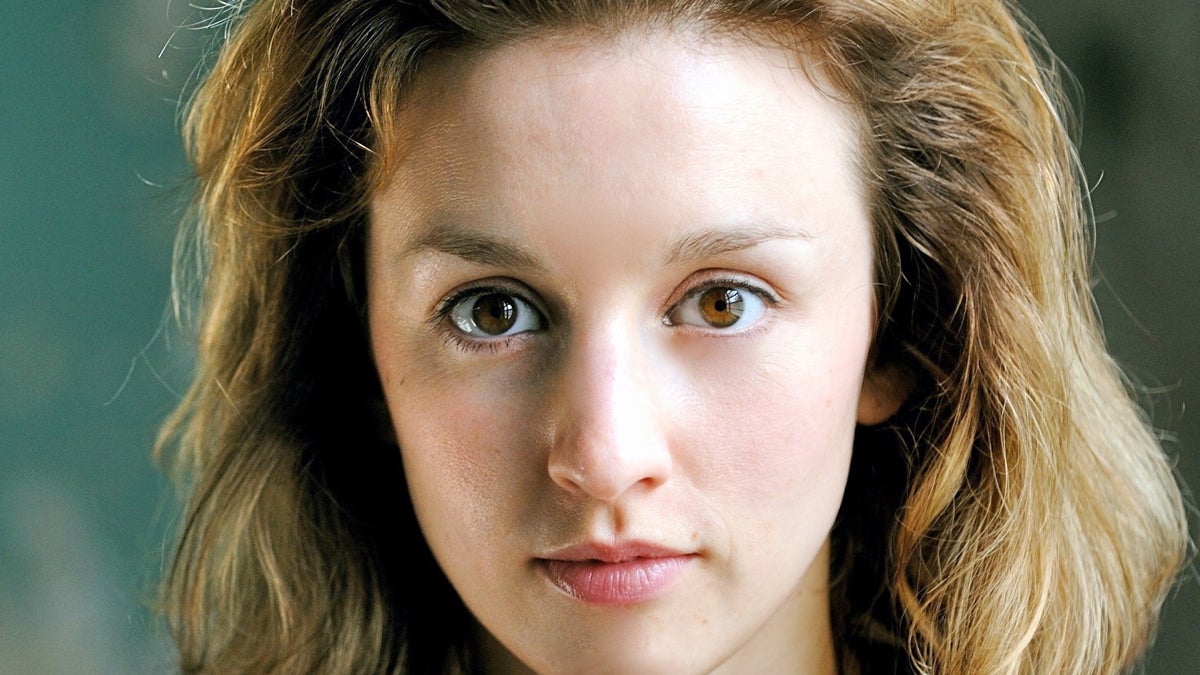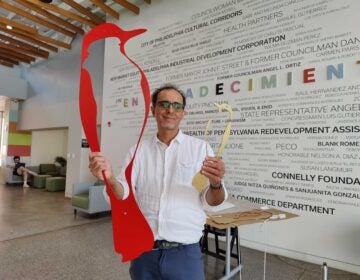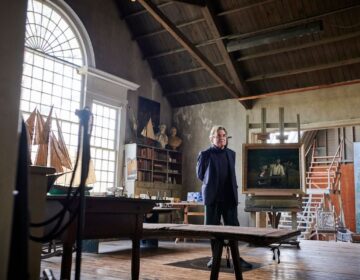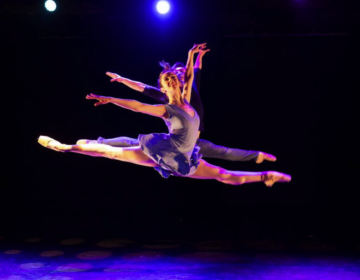Changes ahead for Philly arts funding as Pew invests more in less
Listen
Two years ago Charlotte Ford was named Performer of the Year by Philadelphia magazine. In May she announced she is seeking a new career because she can't find funding anymore. (Photo provided by Charlotte Ford)
The Pew Center of Arts and Heritage in Philadelphia recently announced its 2014 grant winners, pouring nearly $10 million into the regional arts sector.
But many independent artists are finding foundation funding increasingly hard to come by. Changes in the local funding landscape are causing some to rethink their career choices.
The $9.3 million in grant funds distributed in 2014 by the Pew Center for Arts and Heritage is $2 million more than last year, but a far cry from the $22 million doles out in 1993. Last year the Center announced a consolidation of its six different funding disciplines – dance, theater, music, heritage, exhibitions, and management – into just two project categories: performance and exhibition.
“Restructuring allows us to focus on the best projects and the best artists, regardless of discipline,” said executive director Paula Marincola. “We did this for a few reasons: one was to not be limited by discipline but to have a large pool of funds that can support promising projects.”
“We also did it to respond to how artist and cultural organization are working today, with increasingly fluid boundaries between disciplines. And it broadened the net of what was possible,” said Marincola.
These grants are specific to clearly-identified projects. They are separate from the annual Pew Fellowships, which are $60,000 grants awarded to artists with no strings attached.
Projects that received grants this year include a local retrospective of work by pioneering modern dancer Trisha Brown, commissions for The Crossing choir for new music by Pulitzer winning composers from out of town, and a collaborative performance by West Philadelphia dancer Iquail Shaheed and Miami-based playwright Tarell Alvin McCraney.
“The strategic goal is to enhance the cultural life of Philadelphia by supporting artists and organizations of excellence and ambition and imagination,” said Marincola.
Left out in tougher pool
Many independent artists are finding themselves cut out of grants. Pooling all applicants into two categories means artists with smaller ambitions are competing with more established organizations. That $2 million increase in funding at the Pew Center went to fewer grantees — there are 49 this year, compared to 65 last year.
Philadelphia’s art funding has been through a tumultuous period the last few years, with major foundations like Annenberg moving to Los Angeles, the Pew Charitable Trusts – which funds the Center for Arts and Heritage – moving to Washington D.C., and the William Penn Foundation putting a lot of its money behind audience development.
“The reality is that the funding environment here has changed in a way that has had a harmful effect on the arts ecosystem in Philadelphia,” said Amy Smith, the co-founder of Headlong Dance Theater who moonlights as a tax preparer — as such she has been able to look under the financial hood of independent artists for more than a decade.
“It’s always been hard, but it’s gotten harder with foundation guideline changes. And some of the smaller foundations have dried up,” said Smith.
“Pew radically changed their priorities, away from funding the ecosystem, towards excellence and world-class art,” said Smith. There are fewer project with more dollars, projects that will get picked up by national funders.”
Smith is organizing a forum tonight at Drexel University’s URBN Center, 6 p.m. to 8 p.m., in which Philadelphia artists can come together and talk about surviving this new arts economy.
Throwing in the towel
Two years ago Charlotte Ford was named Performer of the Year by Philadelphia magazine, and just six months ago she was won the Otto Haas award for Emerging Theater Artists, which came with a $10,000 prize.
In May she announced she is seeking a new career because she can’t find funding anymore.
“The feedback I got was that my process of creating a play was incorrect, that wasn’t a good way to make a play,” said Ford, who had been a regular recipient of Pew money.
Ford makes what is called “total theater,” developing work through movement and improvisation and collaboration, which can be messy and time-intensive. Her work has been increasingly well-received, with her 2008 piece with Geoff Sobelle, “Flesh and Blood and Fish and Fowl,” had a success run in London, and her 2012 “Bang,” headlined the Live Arts Festival.
But she put all her financial eggs into one basket – the Pew, which cut her off.
“There aren’t that many grants available to independent artists,” said Ford. “Grants on the national level are much more competitive. I’m right on the brink of being competitive for those grants, but I need one more project. This came at a bad point in my career. I’m at the end of my rope. I have to make more money. This is too stressful.”
Ford will be attending graduate school in the fall to study speech pathology, which according to her research has a 100 percent placement rate. She hopes her new career will be flexible enough to allow her to make theater on the side.
Another local artist, Meredith Rainey, has pulled the plug on his 5-year old company Carbon Dance, because foundation money has dried up. In the past he has been awarded money by the Pew Center and twice by the Pennsylvania Council on the Arts. When he found himself spending more time applying for increasingly scarce money, and less time choreographing, he starting funding his projects out of pocket.
Then he stopped Carbon Dance altogether. He will continue to choreograph as an instructor at Drexel University.
Arts scene evolving, not dying
“We continue as a sector to have a focus on foundation philanthropy, but that’s very small,” said Michael Norris, director of the Cultural Alliance of Greater Philadelphia. “Individual artists and cultural organization need to know that and take that into account.”
According to Giving USA’s annual report on philanthropy, foundation funding accounts for about 15 percent of total giving, while individuals make up almost 75 percent.
For many independent artists who do their own fundraising, there is not enough time and energy to chase dozens of individual donors. In order to have time and energy to make art, they depend on just a few big foundation applications to come through.
Craig Peterson, the former coordinator of the Philly Fringe Festival and director of its Live Arts Brewery, says artists in Philadelphia have to orient themselves to a new economic reality where they cannot count on large foundations like they used to.
“Other places have not had these funding structures in place for so long,” said Peterson. “Artists [in other cities] do not expect foundations to support them directly. For Philadelphia, this is a new development.”
After many years in Philadelphia, Peterson has returned to his native New York City to run an experimental theater space. He says artists and organizations in Philadelphia have to re-orient themselves to a new economic environment where money does not go directly to artists, but trickles down through arts organizations.
“This is the moment where small organizations who still are eligible for Pew grants have to step in,” said Peterson. “We need our small organizations who are curating interesting work to apply to Pew and bring these artists up through their organizations, rather than through Pew.”
—
The Pew Charitable Trusts provide funding to WHYY.
WHYY is your source for fact-based, in-depth journalism and information. As a nonprofit organization, we rely on financial support from readers like you. Please give today.





